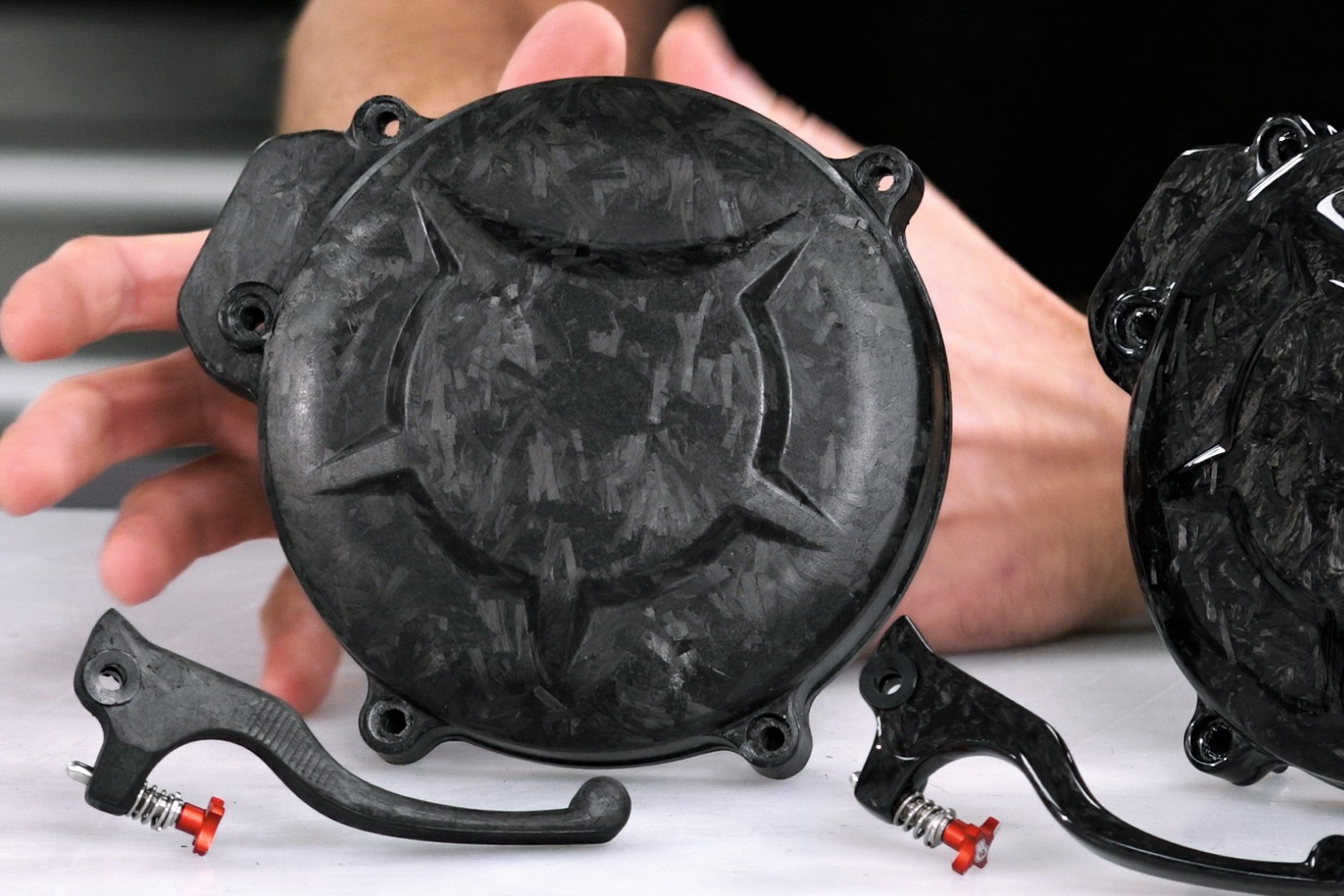Overview
- Casting is a manufacturing process that involves pouring liquid material into a mold, where it hardens into the desired shape. The requisite mold can be 3D printed, CNC machined, or hand-fabricated.
- Like injection molding, this manufacturing process is most applicable in instances where the part cannot be directly formed via 3D printing or machining (often due to material constraints)
- Upfront costs with this technology are generally elevated than direct manufacturing techniques (Printing, machining), but per-cost thereafter is generally low.
- Compression forming can also be used in combination with composites (Example: stranded carbon fiber) to realize composite parts including "forged carbon fiber" parts
Casting:
Our casting services can produce both solid and hollow objects in a variety of materials. We also offer in-house mold design and manufacturing through our full range of fabrication and design capabilities. We offer two approaches for rendering cast parts, based on your desire for a solid or hollow object:
Resin Casting
Resin casting is a flexible process for creating detailed parts by pouring liquid resin into a mold, where it cures and hardens. This technique accommodates a variety of resin types, including urethane (rigid polymers and flexible foams), epoxy, and silicone, each offering different properties like flexibility, durability, or clarity. Composites can also be added (typically stranded carbon fiber) for increased structural rigidity and realize a "forged carbon fiber" part.
Roto-Casting
Roto-casting, or rotational casting, is a method used to create hollow objects by rotating a mold filled with liquid material. As the mold rotates on multiple axes, the material evenly coats the interior walls and gradually hardens. This process is ideal for producing lightweight, hollow parts with uniform thickness, commonly used with resins, plastics, and other liquid materials.
Team Lab Hardware:
This manufacturing strategy may combine a range of hardware and services, including:
The appropriate platform will depend on the specifics of your design. Please collaborate with our team to develop a tailored strategy
Materials
- Silicone Rubber:
- Addition Cure (Platinum Cure): Used for making flexible molds or casting detailed parts like prototypes, due to its low shrinkage and high detail reproduction.
- Condensation Cure (Tin Cure): Suitable for mold making, but can shrink more over time compared to addition-cure silicones.
- Polyurethane Resin:
- Widely used for both solid and flexible parts. Polyurethane resins can vary significantly in properties—some formulations create hard, rigid parts, while others produce rubbery, flexible parts.
- Epoxy Resin:
- Popular for making strong, durable casts with high clarity. It is often used for decorative items, prototypes, jewelry, and encapsulation projects.
- Polyester Resin:
- Often used for clear or decorative casts, such as jewelry and art pieces. Polyester resin is inexpensive but has a strong odor and requires careful handling.
- Plaster:
- Plaster of Paris: Often used for artistic casting and mold making. It is easy to use, affordable, and sets quickly, making it suitable for decorative objects and sculpture.
- Hydrocal or Ultracal: Stronger versions of plaster, often used when more durability is needed, like in creating ceramic molds.
- Urethane Rubber:
- Used to make flexible molds or rubbery parts. Urethane rubber offers a good balance of flexibility and durability and can be cast into a wide variety of shapes and textures.
- Acrylic Resin (PMMA):
- A type of two-part casting resin that is commonly used for creating decorative items, jewelry, or small sculptures. It cures to a hard, glass-like finish.
- Alginate:
- A fast-setting material typically used for lifecasting (e.g., casting body parts) because of its skin-safe properties. Alginate is good for making temporary molds due to its biodegradability and quick setting time.
- Two-Part Expanding Foam:
- Rigid Foam: Typically used to fill molds to create lightweight, solid parts. It expands as it cures and is often used in prop-making.
- Flexible Foam: Used for making cushion-like parts or soft props.
- Stranded Carbon Fiber+Epoxy:
- Stranded carbon fiber can be combined with/embedded within epoxy to create "forged" carbon fiber parts
Examples:




Rates
- Note: We strongly recommend submitting a service request to obtain an accurate project cost estimate. Self-quoting can often lead to miscalculations
We bill for time and materials while using this service. For time, we assess an hourly rate for Staff time. For materials (resin, silicone, etc) we seek at-cost reimbursement for internal clients, and at-cost+NUD for external. Note that most projects will require development services (and associated fees) to design the required mold cavity.
| Description | Internal | External | |
| Materials | Reimburse at-cost for materials in-stock, or provide your own | At-Cost | At-Cost+NUD* |
| Setup and Processing | Assisted rate at $119/hour, to the nearest quarter hour | $119/hour | $160/hour |
*NUD = university required "Non-University Differential"
Get Started
- Heard enough? Get started with a service request! Your request need-not be perfect, we can always revise it as we go. Just provide us with as much detail as is necessary.
- Feeling overwhelmed with the options? We don't blame you! We do a lot! Feel free to email us to set up a consultation. We're happy to chat via zoom, or in person (where we can review samples).
